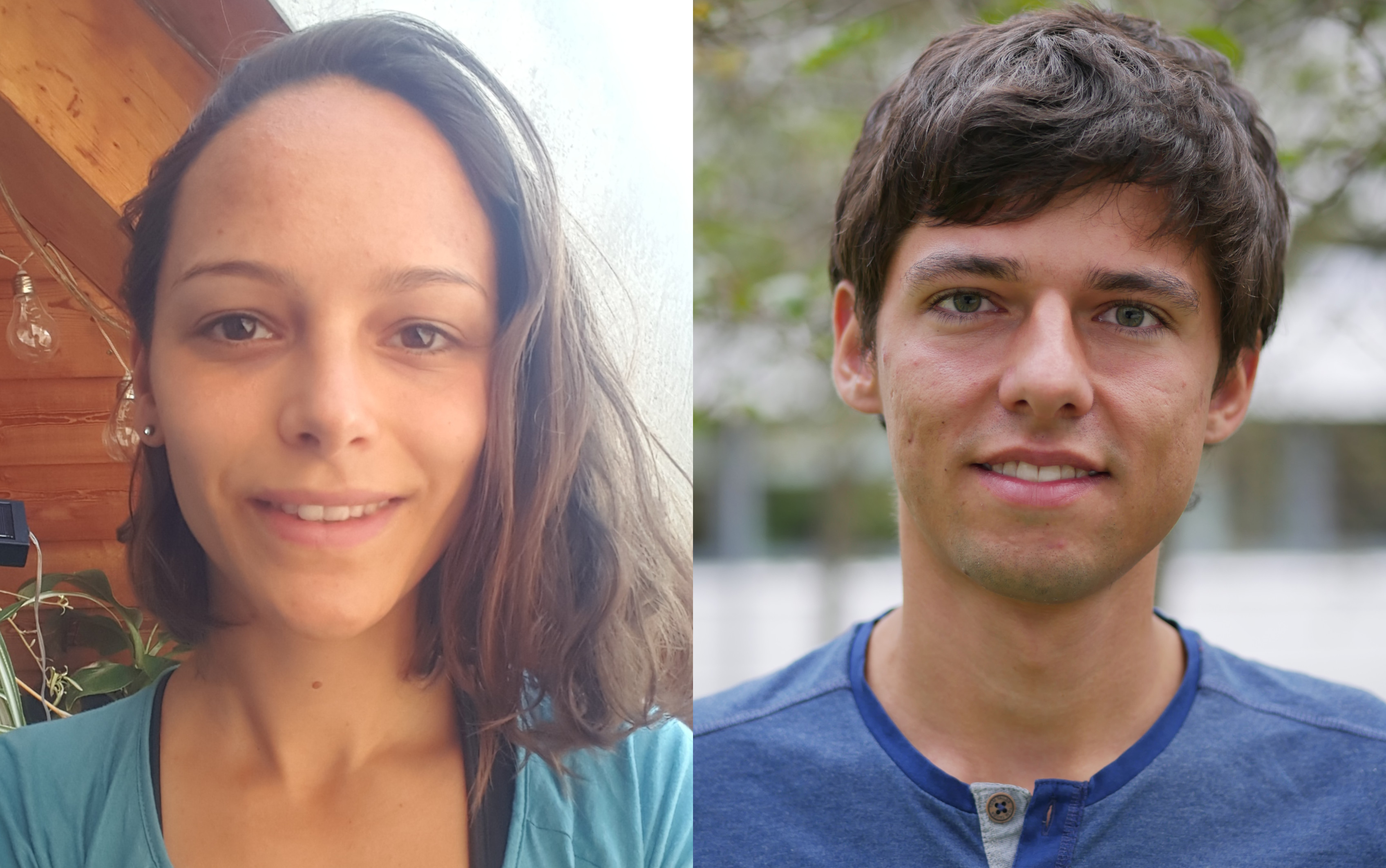Fraunhofer ISE receives two Best Student Awards at 37th EU PVSEC
Patricia Schulze and Christoph Messmer from the Fraunhofer Institute for Solar Energy Systems ISE received Best Student Awards at the 37th European PV Solar Energy Conference and Exhibition. The Awards encourage high-quality work amongst young researchers and recognize their remarkable and outstanding research work in the field of photovoltaics. Both young scientists work on perovskite silicon tandem solar cells, a promising technology that can overcome the theoretical efficiency limit of silicon solar cells.

In a tandem solar cell, a high band gap material in a top solar cell — utilizing high energy photons — is stacked on top of a silicon bottom solar cell — utilizing low energy photons. For the top solar cell material, metal halide perovskites (with the general structure ABX3) are an ideal candidate. Perovskite solar cells have made notable progress in terms of efficiency and can be processed potentially cheap. In addition, perovskites have a tunable band gap — the parameter that determines which part of the solar spectrum is utilized.
Patricia S. C. Schulze is a PhD student at Fraunhofer Institute for Solar Energy Systems (ISE) and the Inorganic and Analytical department of the University of Freiburg. Her research focuses on the development of monolithic perovskite silicon tandem solar cells, in particular on the development of efficient and stable high band gap perovskite absorbers, surface passivation strategies, and adapted contact materials. Moreover, she investigates deposition techniques for perovskite solar cells on µm-sized textured silicon. At the 37th EU PVSEC, Patricia S. C. Schulze was awarded the Best Student Award for her presentation on “High Band Gap Absorber for Monolithic Perovskite Silicon Tandem Solar Cells Reaching 25.1% Certified Efficiency and Ways Beyond”. In this work, Patricia and her team systematically tuned the perovskite composition with a balanced tuning approach at the A- and the X-site to yield improved photo-stability. Additional surface passivation at the interfaces between the perovskite and the contacts enabled high voltage. Implementation of the perovskite material with an optical band gap of 1.69 eV achieved 25.1% certified efficiency in perovskite silicon tandem solar cells.
Christoph Messmer is a PhD student at the Fraunhofer Institute for Solar Energy Systems (ISE) and the Department of Sustainable Systems Engineering (INATECH) of the University of Freiburg. His PhD is supported by a scholarship of the German Federal Environmental Foundation (Deutsche Bundesstiftung Umwelt - DBU) and focuses on the numerical simulation of high efficiency silicon solar cells, in particular on the investigation of passivating contact technologies and their application in tandem devices like perovskite-silicon tandem solar cells. He was awarded the Best Student Award for his plenary talk “The Race for the Best Silicon Bottom Cell: Efficiency and Cost Evaluation of Perovskite-Silicon Tandem Cells”.
In this work, Christoph and his team elaborated on different silicon bottom cell concepts based on the PERC, TOPCon and SHJ technology to estimate the efficiency and cost potential of perovskite-silicon tandem devices. For each tandem device, the technological feasibility was examined, followed by a detailed investigation of the efficiency potential by means of an experimentally validated simulation model. Subsequently, each bottom cell concept was evaluated in terms of all-in cell costs per piece. Bringing the efficiency potential and cost evaluation together allowed them to assess the different tandem cell concepts in terms of module cost per Watt peak. The results show that perovskite-silicon tandem solar cells are promising candidates to significantly reduce the levelized cost of electricity for the owner of the PV installation and, in particular, that the race for the best silicon bottom cell is still open.
For more information on tandem solar cells: https://www.ise.fraunhofer.de/en/key-topics/tandem-photovoltaics.html
Last modified: